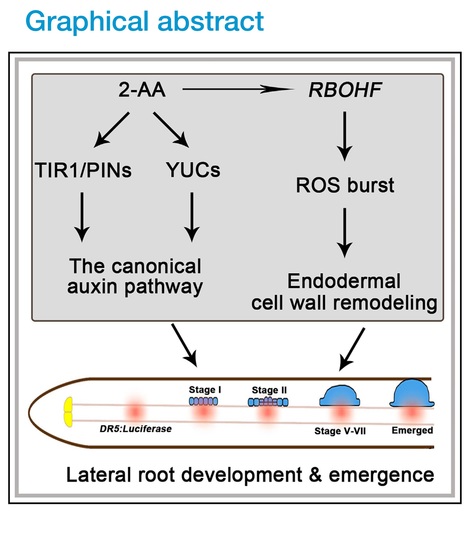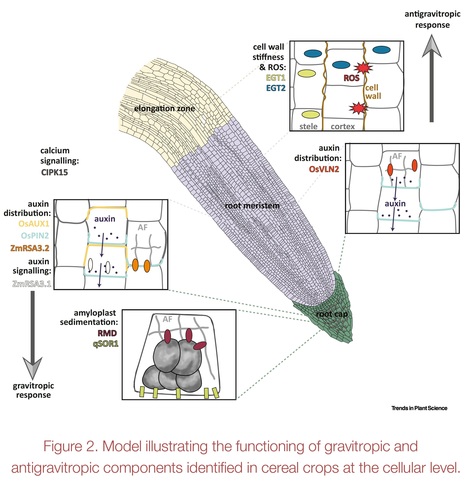
|
Scooped by Julio Retamales |
Authors: Yu Chen, Yansong Fu, Yanwei Xia, Youzhi Miao, Jiahui Shao, Wei Xuan, Yunpeng Liu, Weibing Xun, Qiuyan Yan, Qirong Shen and Ruifu Zhang.
Cell Reports (2023)
Editor's view: Chen et al. show that 2-AA, a compound identified from T. guizhouense NJAU4742, promotes plant lateral root development via the canonical auxin pathway as a stimulator and increases ROS deposition in the Casparian strip as an IAA mimic, which finally enhances endodermal cell wall remodeling and facilitates lateral root emergence.
Highlights: • 2-AA identified from T. guizhouense NJAU4742 can promote lateral root development • 2-AA regulates auxin signaling and transport in the canonical auxin pathway • 2-AA enhances endodermal cell wall remodeling via an RBOHF-induced ROS burst
Abstract: "Trichoderma spp. have evolved the capacity to communicate with plants by producing various secondary metabolites (SMs). Nonhormonal SMs play important roles in plant root development, while specific SMs from rhizosphere microbes and their underlying mechanisms to control plant root branching are still largely unknown. In this study, a compound, anthranilic acid (2-AA), is identified from T. guizhouense NJAU4742 to promote lateral root development. Further studies demonstrate that 2-AA positively regulates auxin signaling and transport in the canonical auxin pathway. 2-AA also partly rescues the lateral root numbers of CASP1pro:shy2-2, which regulates endodermal cell wall remodeling via an RBOHF-induced reactive oxygen species burst. In addition, our work reports another role for microbial 2-AA in the regulation of lateral root development, which is different from its better-known role in plant indole-3-acetic acid biosynthesis. In summary, this study identifies 2-AA from T. guizhouense NJAU4742, which plays versatile roles in regulating plant root development."
Julio Retamales's insight:
Relevant contribution!
No comment yet.
Sign up to comment



 Your new post is loading...
Your new post is loading...










